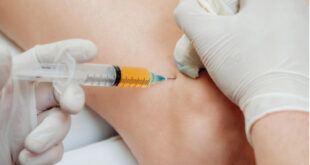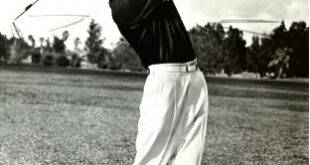 An estimated 2.7–6.1 million people in the United States have Atrial Fibrillation (often called AFib or AF). With the aging of the U.S. population, this number is expected to increase. Afib is the most common type of heart arrhythmia.
An estimated 2.7–6.1 million people in the United States have Atrial Fibrillation (often called AFib or AF). With the aging of the U.S. population, this number is expected to increase. Afib is the most common type of heart arrhythmia.
During AFib, the normal beating in the upper chambers of the heart (the two atria) is irregular, and blood doesn’t flow as well as it should from the atria to the lower chambers of the heart.
Now, a new minimally invasive treatment option, cryoablation, has different and unique characteristics that allow doctors to achieve higher therapeutic success rates.
AFib may occur in brief episodes (paroxysmal), or it may become more persistent and even permanent. In paroxysmal Afib the faulty electrical signals and rapid heart rate begin suddenly and then stop on their own. Symptoms can be mild or severe. The most common symptoms include palpitations, a racing or pounding heartbeat, chest discomfort, fainting, light headedness, fatigue, shortness of breath or weakness.
AFib is a serious medical condition associated with an increased risk of stroke, heart failure and other heart-related complications.
Specializing in treating arrhythmia or irregular heart rhythms, – Yoel R. Vivas, M.D., F.H.R.S., and Luis F. Mora, M.D – say that cryoablation has several advantages over traditional radiofrequency ablation. “Cryoablation is an excellent treatment option for patients with paroxysmal AFib who have not responded to medication alone,” explains Dr. Vivas. “It is the future of AFib ablation techniques.” “It is the preferred ablation method at Emory University in Atlanta, where I did my
Fellowship training,” adds Dr. Mora.
They are now performing cryoablations at Bethesda Heart Hospital and Delray Medical Center.
Achieving a Normal Heart Rhythm with Cryo
Patients that suffer from Paroxysmal Afib most commonly have their arrhythmia arising from the pulmonary veins. These are the four veins that take blood from the lungs and drain it to the left atrium. Once your doctor has decided that you may benefit from being in normal rhythm, medications (antiarrhythmic drugs) or an ablation procedure may be used.
“The principle of ablation consists in blocking or eliminating the electrical impulses that cause the irregular rhythm. We do this by freezing and subsequently creating scar tissue at the point where the pulmonary vein enters the atrium,” Dr. Vivas continued. “Our goal is to electrically isolate the four veins from the left atrium. This is why this procedure is known in the medical community as pulmonary vein isolation”. Cryoablation is a minimally invasive procedure that involve using a catheter inserted through the veins in the groins.
Traditional ablation procedures have used Radio-frequency as a source of energy. This is a technology that warms up and basically “cauterizes” the tissue. The challenge of this technology is that the scar produced is small and multiple lesions are required to “isolate” the veins. The process is repeated all the way around the vein, creating a circle of scar “dots.” This can be technically challenging, and tiny gaps may be left between the scars that will allow the electrical currents to continue to pass. “Cryoablation works on the same principle, but uses cold instead of heat to create a much bigger and durable scar tissue,” added Dr. Vivas.
With cryoablation, a special balloon is inserted through the catheter and inflated at the junction of each pulmonary vein with the atrium. Then it is filled with a refrigerant nitrogen gas to create a continuous scar area around the entire edge of the vein tissue. “One of the main advantages of cryoablation is that the procedure takes much less time. Instead of two to four hours, it usually takes about one hour,” states Dr. Mora. “That means the patient spends less time under anesthesia.”
Potential less collateral damage
Although all invasive procedures have
risks, cryoablation has a lower risk of damaging the surrounding heart tissue, specifically the esophagus. Dr. Vivas adds, “Patients usually spend one night in the hospital and can return to normal activities within a few days. They may experience cough, minor soreness in the chest, or bruising or soreness in the groin where the catheter was inserted.” In most cases, one cryoablation treatment is enough; however, occasionally patients may need to go
back for a repeat procedure.
Yoel R. Vivas, M.D., F.H.R.S.
Dr. Yoel Vivas is the founder of the Arrhythmia Center of South Florida. He’s been practicing cardiac electrophysiology in Boynton Beach and Delray Beach area since 2012. Dr. Vivas is a Fellow of the Heart Rhythm Society (FHRS).
This distinction recognizes members for their advanced training, certification and commitment to the research and treatment of heart rhythm disorders. Dr. Yoel Vivas offers comprehensive evaluation and treatment of abnormalities of the heart rhythm (Arrhythmia) including but not limited to ablation of atrial fibrillation, atrial flutter, supraventricular and ventricular tachycardia. He also specializes in implantation of pacemakers, defibrillators and devices to treat heart failure (CRT).
Dr. Yoel Vivas is the only electrophysiologist in South Florida who is also board certified in Advanced Heart Failure and Transplant Cardiology. His special clinical interests include the treatment of advanced heart failure with novel devices and ablation of arrhythmias that predispose to heart failure or worsen its clinical symptoms.
Medical School
Universidad Central de Venezuela. Magna Cum Laude
Internship/Residency
Internship and Residency in Internal Medicine,
Hospital of St. Raphael, Yale University School of Medicine
Fellowships
Fellowship in Cardiovascular Diseases,
The Western Pennsylvania Hospital,
Temple University Program, Pittsburgh, PA.
Chief Cardiology Fellow. The Western Pennsylvania Hospital, Temple University Program. Pittsburgh, PA.
Fellowship in Clinical Cardiac Electrophysiology.Lahey Clinic, Tufts University School of Medicine. Burlington, MA.
Board Certifications
Clinical Cardiac Electrophysiology, ABIM
Advanced Heart Failure and Transplant Cardiology,ABIM
Cardiovascular Diseases, ABIM
Internal Medicine, ABIM
Nuclear Cardiology, ASNC
Echocardiography, ASE
Clinical Lipidology, NLA
Check Also
The Mighty Maestro: Bob “Mighty Mite” Toski’s Enduring Legacy at 98
In the warm glow of a spring evening in Delray Beach, Florida, a remarkable celebration …
 South Florida Health and Wellness Magazine Health and Wellness Articles
South Florida Health and Wellness Magazine Health and Wellness Articles




